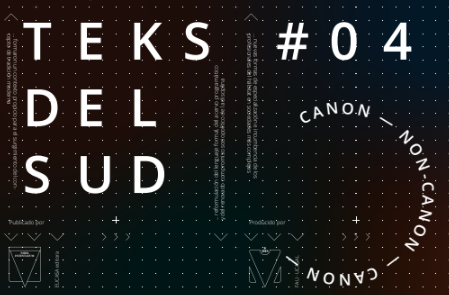Buenos Aires 1962. Project for the National Library
Once the Function of the Function Ceased to be the Form of the Form
Abstract
Image is an issue that should not be taken for granted in architecture. For much of their modern history, from the Avant-Garde to the Postwar period, architects left aside not ot only artistic figuration, but any kinds of mimesis, except for the representation of a certain objective abstract aesthetic ideal. Form constituted a quality without rank, derived from whatever the concept "function" might mean: the struggle for the survival of the species, the organicity of a system of viscera, the efficient and lthanic movement of a machine (Behne, 1923; De Fusco, 1967). From such point of view, the emotional aspect of the work of architecture derived from the coincidence between the appearance of the thing and its strict purpose: dwelling, work, learning (Groys, 2014). The drama that the end of the Second World War undressed, forced the reintroduction of the debate over the architectural form, beyond the limited modernist fiction, dispassionate and rational. When function ceased to be the unitary pattern against which to compare modern buildings, critics and historians had to have new mirrors: monumentality, the production process, the user, the city, the form, the genius loci, History or culture, betraying two traditions. The modern tradition, by reintroducing the plastic and formal parameters of previous critical and productive cycles, and the classicist tradition, by leaving aside again its particular figuration. The question of this writing will be about the purpose in architecture, that time that the function of the function ceased to be the form of the form.
This question is attempted to be answered here, around the contest for the project of the National Library in Buenos Aires in 1962, considered as a chance of reintroduction of the debate around monumentality in Argentina duribg the Developmentalism Cycle (1957-1972). The first chapter will refer to the progressive transformation of the concept of “Function” to the one of “Purpose”. A second chapter will refer to the “Form” as a “, that is tosay, as a not exclusively practical assessment, which links the project through forms, to organization and to the program. Finally, the formulation of architectural images will be verified as catalysts of propitiated emotions, which respond to the concept of purpose, in the case of public architecture, as it has wanted to be presented around the aforementioned contest. The architecture of the National Library, like the architecture produced in 1950 and 1960, was also called "systemic", a metaphor as organic as it was mechanical and only after Reyner Banham's classification, "new-brutalist" (Banham, 1955). A feature of an efficient and profitable organization was superimposed by the form, a trait of character that is manifest, redundant and dramatic because of the courage it presupposes, and inescapable.
This article is in an ex post bibliographic check. It was pertinent to reconstruct the purpose of the Nationa Library as it can be deduced, not only from the bases of the Contest, but also from the memory of the authors of the project, the Jury’s reports and the display of the winning project to the public. An architectural or project description of the Library building should not be expected here, but rather the enumeration of the architectural features that guide the understanding of the concept of “Purpose” in public architecture, manifested as an interpretation of the expectations of the promoters and officers about the building, above technical and functional considerations, which reopened the figurative dimension of the city's architecture.
Downloads
References
Argan, G.C. (1965) Proyecto y destino, Milán
Banham, R. “The new brutalism” en Architectural Record. December, 1955
Banham, R. (1966) Brutalismo. Barcelona, Gustavo Gili
Behne, A. (1923-25) Die Moderne Zweckbau
Boletín SCA n°48_enero 1963
Bonta, J.P. (1977) Sistemas de signifi cación arquitectónica. Barcelona, Gustavo Gili
Bullrich, F. (1957) Algunos problemas del diseño en Nueva Visión, N°9
Collins, P. (1977) Los ideales de la arquitectura moderna. 1750-1950. Barcelona, Gustavo Gili
De Fusco, R. (1970) Arquitectura como “mass-médium”. Notas para una semiología arquitectónica. Buenos Aires, Anagrama
De Zurko, E.R. (1958) La teoría del funcionalismo en la arquitectura. Buenos Aires, Nueva Visión
Frampton, K. (1983) Historia Crítica de la Arquitectura Moderna. Barcelona, Gustavo Gili
Groys, B. (2014) Volverse público: las transformaciones del arte en el ágora contemporánea. Buenos Aires, Caja Negra
Heidegger, M. “Bauen, denken, wohnen” (1951) Liernur, J.F. (1982) “Alpargatas, no. Libros, sí” en Materiales. Buenos Aires, La Escuelita
Anónimo (2004) “Testa, Clorindo” en Aliata, F. y Liernur, J.F. [Comp.] Diccionario de arquitectura en Argentina. Buenos Aires, AGEA
Plotquin, S. (2018): “Grandes luces: Vivienda y arquitectura en el ciclo de producción de la energía eléctrica” en Registros, Revista de Investigación Histórica - Vol. 14 Núm. 1: Arquitecturas de Estado: obras, infraestructura, empresas (1929-1973)
Rossi, A. (1966) L’architettura della città, Marsilio Editore, Padova, 1966
Shmidt, C. (2015) “Francisco Bullrich y la historia de la arquitectura. Anotaciones en tres momentos”. Vitruvia. Año 2 N°2
Sullivan, L. (1896) “The tall offi ce building artistically considered”. Lippincott’s Magazine, Vol. 339, p. 403-409
Copyright (c) 2023 Silvio Plotquin

This work is licensed under a Creative Commons Attribution-NonCommercial-ShareAlike 4.0 International License.







